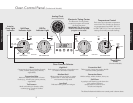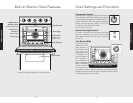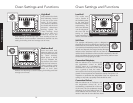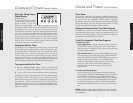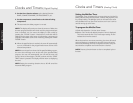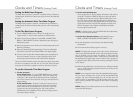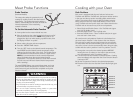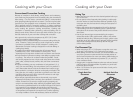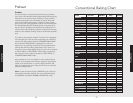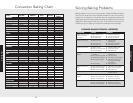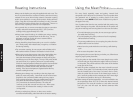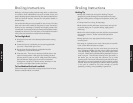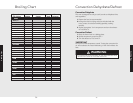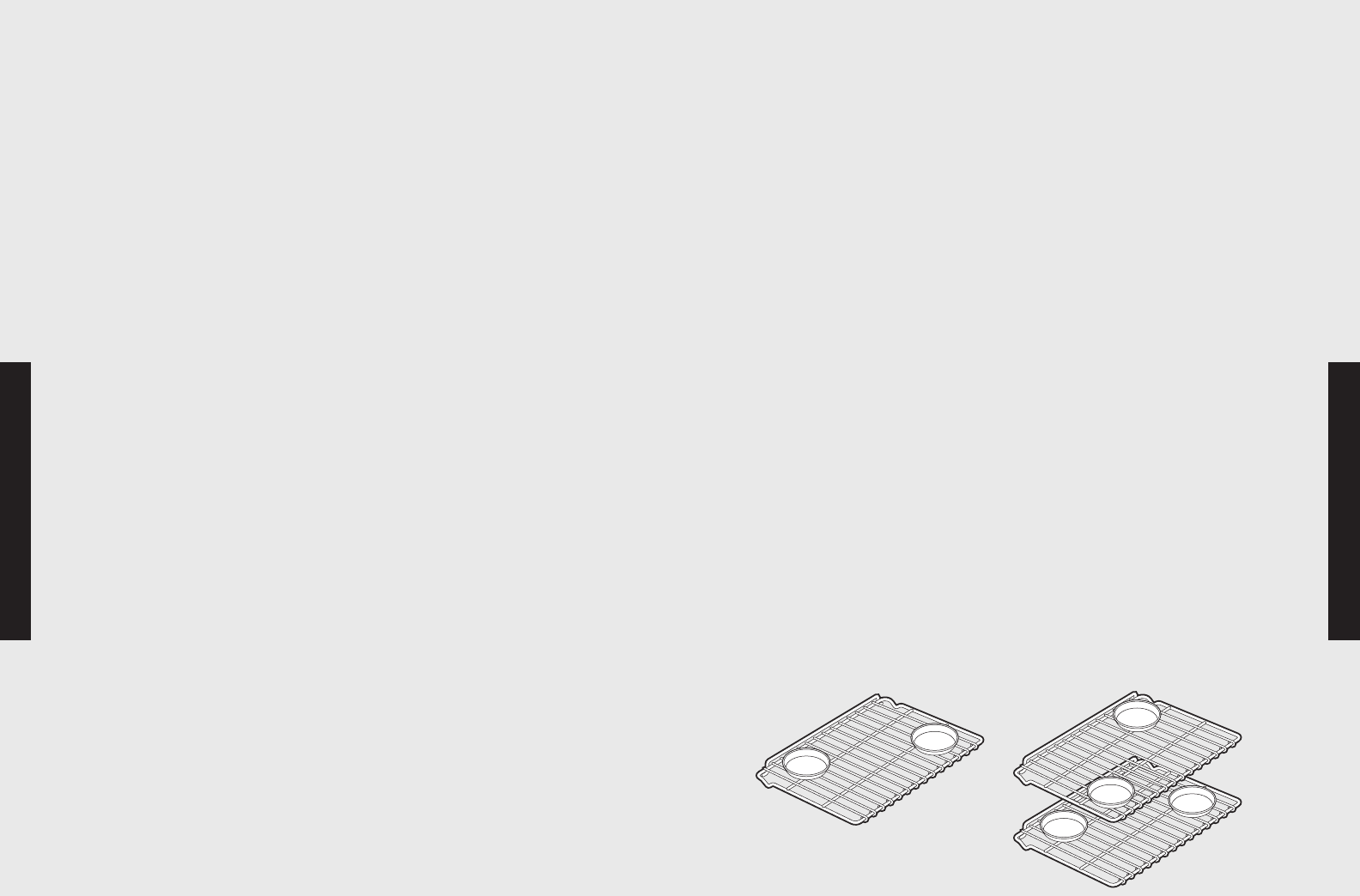
25
24
Cooking Tips
Cooking Tips
Conventional/Convection Cooking
Because of variations in food density, surface texture and consistency,
some foods may be prepared more successfully using the conventional
bake setting. For this reason, conventional baking is recommended
when preparing baked goods such as custard. The user may find other
foods that are also prepared more consistently in conventional bake.
This is perfectly normal. Convection cooking is a cooking technique
which utilizes fan forces air to circulate heat throughout the entire oven
cavity creating the optimum cooking environment. Cooking with
convection is intended when performing multi-rack baking and for
baking heavier foods. Below are some tips which will allow you to get
the best results out of your oven when cooking with convection.
•As a general rule, reduce the temperature by 25° F (10° C) when
using a convection cooking function.
•Cooking times for standard baking and convection baking will be the
same. However, if using convection to cook a single item or smaller
load then it is possible to have 10-15% reduction in cooking time.
(Remember convection cooking is designed for multi-rack baking or
cooking large loads).
•If cooking items which require longer than 45 minutes then it is
possible to see a 10% - 15% reduction in cooking time. This is
especially true for large items cooked in the convection roast function.
•A major benefit of convection cooking is the ability to prepare foods
in quantity. The uniform air circulation makes this possible. Foods
that can be prepared on two or three racks at the same time include:
pizza, cakes, cookies, biscuits, muffins, rolls, and frozen convenience
foods.
•For three-rack baking, use any combination of rack positions 2, 3, 4,
and 5. For two-rack baking, use rack positions 2 and 4 or positions 3
and 5. Remember that the racks are numbered from bottom to top.
•Items cooked in a convection function can be easily over baked. This
being the case, it is usually a good idea to pull items out of the oven
just before they seem to be done. Items will continue to cook right
after they are set out of the oven.
•Some recipes, especially those that are homemade, may require
adjustment and testing when converting from standard to convection
modes. If unsure how to convert a recipe, begin by preparing the
recipe in conventional bake. After achieving acceptable results, follow
the convection guidelines listed for the similar food type. If the food is
not prepared to your satisfaction during this first convection trial,
adjust only one recipe variable at a time (cooking time, rack position,
or temperature) and repeat the convection test. Continue adjusting
one recipe variable at a time until satisfactory results are achieved.
Cooking with your Oven
Baking Tips
• Make sure the oven racks are in the desired position before you
turn on the oven.
• Do not open the door frequently during baking. Look through
the door window to check doneness whenever possible. If you
must open the door, the best time is during the last quarter of
the baking time.
• Bake to the shortest time suggested and check for doneness
before adding more time. For baked goods, a stainless steel
knife placed in the center of the product should come out clean
when done.
• Use the pan size and type recommended by the recipe to
ensure best results. Cakes, quick breads, muffins, and cookies
should be baked in shiny, reflective pans for light, golden crusts.
Avoid the use of old, darkened pans. Warped, dented, stainless
steel and tin-coated pans heat unevenly and will not give
uniform baking results.
Pan Placement Tips
• When using large (15" x 13") flat pans or trays that cover most
of the rack, rack positions 2 or 3 produce the best results.
• When baking on more than one rack, it is recommended to use
one of the convection modes and the 2nd and 4th position or
the 3rd and 5th position for more even baking. When baking on
three racks, use any combination of positions 2, 3, 4, and 5 for
more consistent results.
• Stagger pans in opposite directions when two racks and several
pans are used in conventional bake. If possible, no pan should
be directly above another.
• Allow 1 to 2 inches of air space around all sides of each pan for
even air circulation.
Single Rack Pan
Placement
Multiple Rack Pan
Placement
Cooking with your Oven



